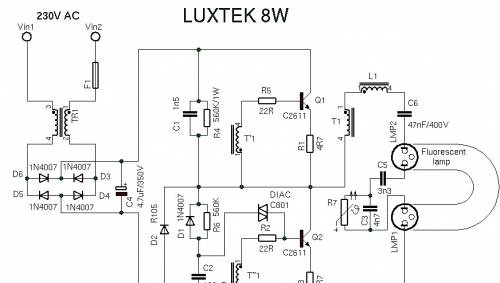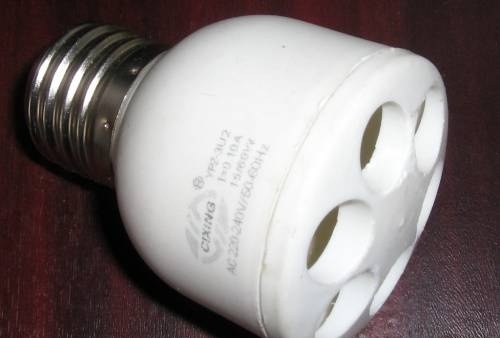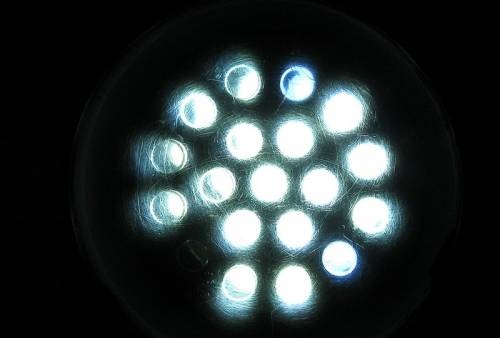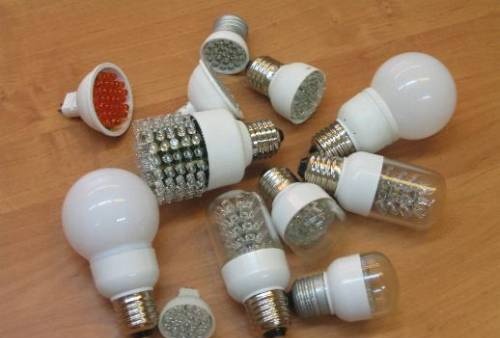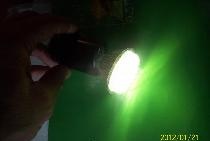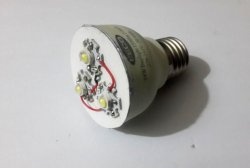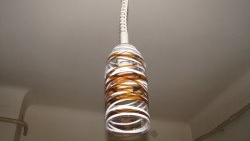In connection with a big scam to instill thoughts about the need to install energy-saving lamps at home, many began to install them en masse in their homes. But soon you notice with surprise that the durability of such lamps is a maximum of half a year, the brightness and temperature of the light do not stand up to criticism, and the price, even for non-branded energy-saving lamps, is 10 times higher than for conventional incandescent lamps. Of the fluorescent lamps purchased last year, more than half have already burned out.
Typical diagram of an energy-saving lamp converter.
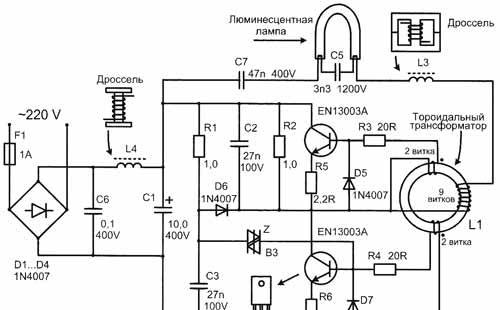
If you also have used lamps lying around at home, you can remake them by removing the internal board of the converter and replacing it with a voltage reduction circuit for power supply LEDs. Supply current LEDs We set the resistor to 100-200 Ohm, within 20-50mA.
So, we disassemble the lamp, removing the converter board and the glass bulb (as a rule, it is this that burns out the fastest). What remains is a cartridge with a capacious base. There we will place the assembled circuit with LEDs and a reflector.
LEDs, of course, will not give the same brightness as a fluorescent lamp, but if you buy not consumer goods for $0.1, but branded ones, the brightness of 6 pieces will be at a fairly decent level.
These LED lamps are already being produced in industry, but their price is still higher than that of energy-saving lamps.

